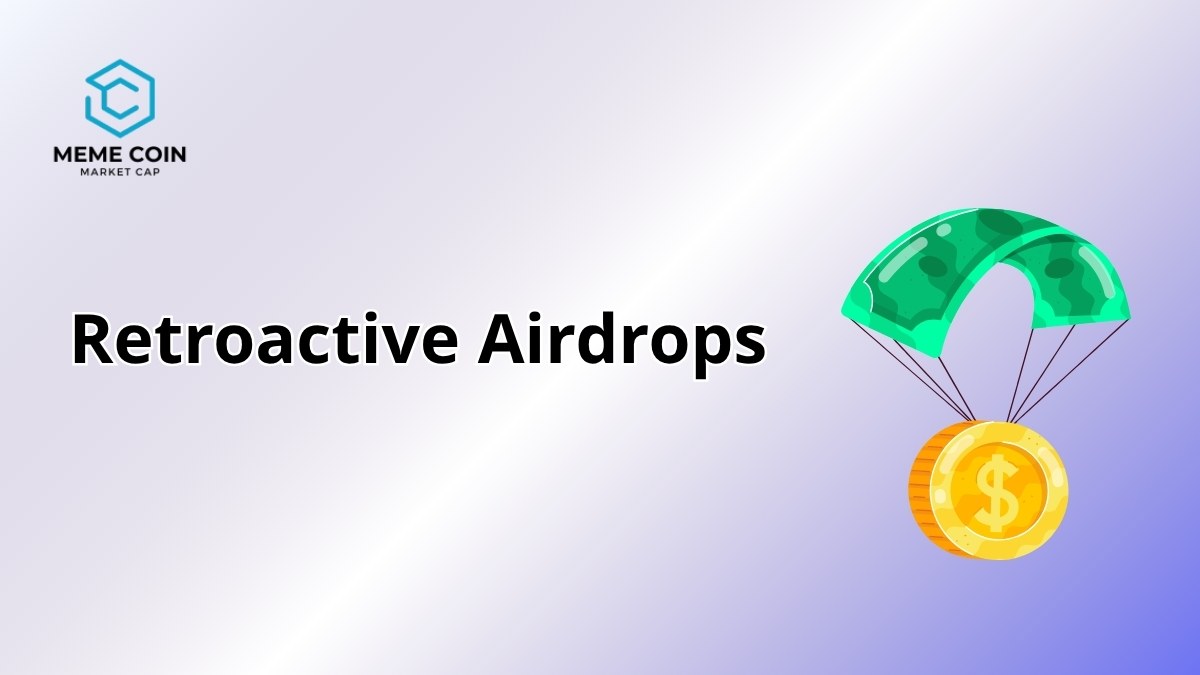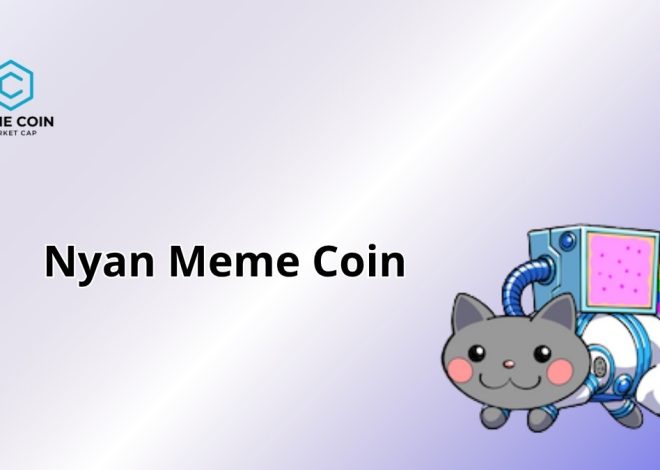
Retroactive Airdrops: Unlocking the Future of Token Distribution
In the Web3 space, few mechanisms have captured user enthusiasm and project loyalty quite like retroactive airdrops. Unlike traditional airdrops that require active participation for eligibility, retroactive airdrops are designed to reward users after they’ve contributed to a protocol—often without their knowledge.
This approach aligns deeply with the decentralized ethos of crypto, emphasizing fairness, merit, and organic engagement. But as the ecosystem matures, so do the expectations. In this comprehensive guide, we’ll explore the history, mechanics, strategic importance, and forward-looking opportunities of retroactive airdrops—as well as how users can best position themselves for future rewards.
Contents
- 1 The Rise of Retroactive Airdrops in Web3
- 2 Why Retroactive Airdrops Matter for Web3 Projects
- 3 How Retroactive Airdrops Work: A Technical Breakdown
- 4 How to Qualify for Future Retroactive Airdrops
- 5 Top Tools to Track Retroactive Airdrop Opportunities
- 6 Risks and Realities of Retroactive Airdrops
- 7 The Future of Retroactive Airdrops in Web3
- 8 Maximize Your Airdrop Potential in 2025 and Beyond
The Rise of Retroactive Airdrops in Web3
The idea of rewarding past users wasn’t always the norm. In the early days of crypto, airdrops were often gimmicks—free tokens distributed to generate hype or bootstrap communities. But starting in 2020, the narrative shifted.
Uniswap’s 2020 Airdrop: A Watershed Moment
When Uniswap launched its governance token UNI in September 2020, it retroactively rewarded every wallet that had used the protocol with 400 UNI tokens. At the time, this equated to over $1,000—and in later market cycles, much more. This was the first large-scale retroactive airdrop that rewarded meaningful engagement instead of promotional gimmicks.
It proved two things:
- Protocols could use historical data to identify real users.
- Retroactive rewards could build unprecedented goodwill.
From One-Time Surprise to Standardized Incentive
Since Uniswap, projects like ENS, dYdX, Optimism, Arbitrum, and even Lens Protocol have followed suit. The retroactive airdrop is no longer an exception—it is becoming a core feature of token distribution models in crypto.
Today, retroactive airdrops are:
- A reward mechanism
- A decentralization tool
- A marketing engine
- A loyalty program
They represent a philosophical shift: from acquisition through speculation to retention through recognition.
Why Retroactive Airdrops Matter for Web3 Projects
From a project’s perspective, retroactive airdrops serve multiple high-impact purposes. They go beyond token giveaways—serving as a strategic foundation for protocol growth.
Fostering Organic Community Growth
Instead of paying influencers or launching expensive ads, retroactive airdrops empower communities to grow through natural interest and utility. A user who discovers a protocol early, uses it meaningfully, and later receives a reward, is far more likely to stay loyal than someone who joined purely for monetary gain.
Enhancing Protocol Legitimacy
Airdrops based on historical usage demonstrate transparency. They tell the world: We value real users, not bots or mercenaries. Retroactive rewards foster credibility and reduce the risk of centralization by distributing tokens based on actual contribution.
Bootstrapping Governance and Decentralization
Many retroactive airdrops come in the form of governance tokens. By distributing these to early users, protocols create a governance layer rooted in informed, active participants—those most likely to shape the protocol’s future responsibly.
How Retroactive Airdrops Work: A Technical Breakdown
Understanding the technical side of retroactive airdrops is essential for users and developers alike.
Eligibility Criteria
Common criteria include:
- On-chain interactions (e.g., swaps, staking, governance votes)
- Holding specific NFTs
- Providing liquidity to DEXs
- Testing testnet or beta protocols
- Activity before a specific snapshot date
Smart contracts or backend systems analyze wallet histories using tools like The Graph, Dune Analytics, or custom scripts to compile eligible addresses.
Snapshot Timing and Fairness
The fairness of retroactive airdrops often depends on the snapshot block or date chosen. Some protocols take multiple snapshots to prevent last-minute farming. Others weigh early interaction more heavily. These rules are usually announced after the fact to prevent gaming the system.
Distribution Models
Retroactive rewards may be:
- Equal (e.g., Uniswap): Flat number per eligible wallet
- Tiered (e.g., Arbitrum): Based on levels of engagement
- Weighted (e.g., Optimism): Rewards based on participation depth
The structure reflects the protocol’s values—equality, merit, or a mix of both.
How to Qualify for Future Retroactive Airdrops
While there are no guarantees, you can significantly increase your odds by engaging smartly.
Use Emerging Protocols Early
The earlier you engage with a project—especially during testnet or beta phases—the more likely you are to qualify. Projects like LayerZero, StarkNet, and zkSync are examples where testnet participation has often translated to eligibility.
Interact Meaningfully
Depth matters. Don’t just make one transaction and leave. Stake, vote, LP, and return. Protocols use activity heuristics to distinguish farmers from true users.
Stay On-Chain Across Ecosystems
Be active on Ethereum, Solana, Cosmos, Base, and Avalanche. Many upcoming retroactive airdrops prioritize multichain users who bring value to different ecosystems.
Join DAOs and Contribute
Even if you don’t code, contributing to forums, voting on proposals, or moderating Discords can lead to DAO-based retroactive airdrops.
Top Tools to Track Retroactive Airdrop Opportunities
Being prepared is crucial. The following platforms help you monitor eligibility and stay ahead.
Dune Analytics
Use custom dashboards to track wallet usage and transaction history. Many developers create public dashboards that mirror eligibility logic for previous retroactive airdrops.
Airdrop Trackers
Sites like Earnifi, Airdrops.io, and DeFi Airdrops track known airdrops and rumored campaigns. Some integrate wallet tracking and alert systems.
Twitter & Crypto Discords
Join communities like DeFi Alpha, Airdrop Hunters, and ZeroKnowledgeCollective. They often break airdrop criteria weeks before official announcements.
Risks and Realities of Retroactive Airdrops
The hype is real—but so are the limitations. It’s important to approach retroactive airdrops with a clear-eyed understanding.
Airdrop Farming Destroys Protocol Economics
As retroactive airdrops become predictable, some users create thousands of wallets to farm eligibility. This burdens protocols with sybil attacks and dilutes rewards for genuine contributors.
Solutions:
- Soulbound tokens
- Sybil resistance tools like Gitcoin Passport
- Verified user layers
Airdrops Are Often Taxable
In many jurisdictions, retroactive airdrops are taxable as income at the time of receipt, based on fair market value. Failure to report can lead to legal complications.
Over-Reliance May Backfire
Some users focus entirely on “airdrop hunting” without contributing long-term. Projects are becoming smarter at filtering out superficial engagement. Long-term participation is key.
The Future of Retroactive Airdrops in Web3
As 2025 approaches, the airdrop landscape is maturing. We expect retroactive airdrops to become more intelligent, selective, and technically sophisticated.
Dynamic Reputation-Based Airdrops
Protocols may assign on-chain scores using AI, soulbound tokens, or zkProofs to determine which users genuinely contributed—and how much they deserve.
Gamified Airdrop Campaigns
Instead of hidden snapshots, some protocols are launching gamified quests and point systems (e.g., LayerZero, zkSync, EigenLayer). These “open secrets” let users earn eligibility transparently over time.
DAOs and Identity-Layer Airdrops
In 2025, we expect DAOs to issue their own retroactive airdrops based on Gitcoin Passport, Optimism’s badge system, and decentralized identity protocols. This favors authentic long-term users over opportunistic wallets.
Maximize Your Airdrop Potential in 2025 and Beyond
To succeed in the evolving world of retroactive airdrops, you must be strategic, consistent, and engaged. Here’s your checklist for airdrop readiness:
- Use emerging protocols early and deeply
- Stay active across multiple chains
- Vote and participate in governance
- Join DAO communities and Discords
- Track your wallet activity regularly
- Avoid chasing hype—focus on real value
The next wave of retroactive airdrops will reward users who think long-term and act with purpose. If you become one of them, your wallet—and the ecosystem—will thank you.






